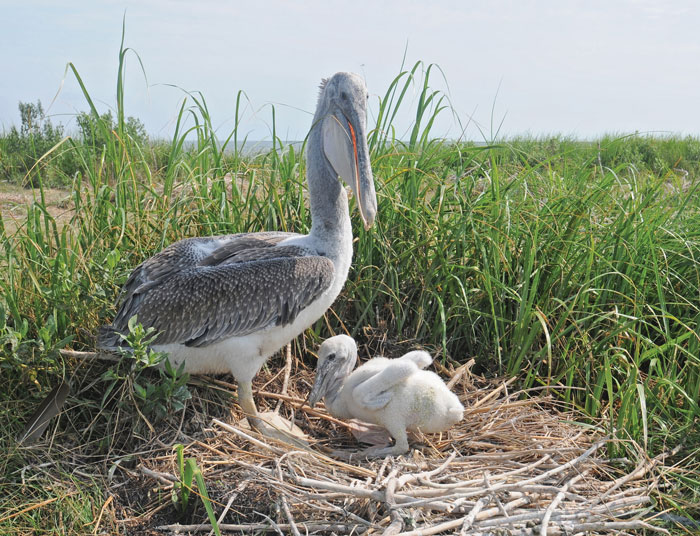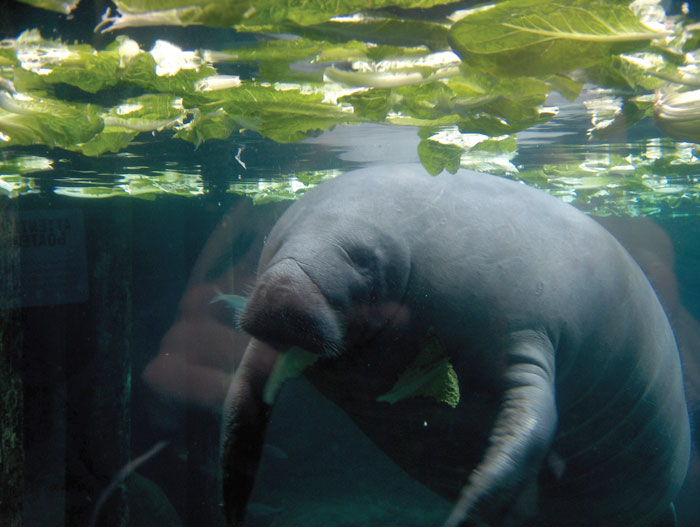An invitation to travel down the Intracoastal Waterway
This September I was offered the opportunity to work as crew on a boat delivery from Herrington Harbour, MD, to Stuart, FL, primarily travelling down the Intracoastal Waterway (ICW). My professional sailing career traversed the Chesapeake Bay, Atlantic Ocean, and Caribbean Sea, yet I had never travelled via the ICW, as it is not well suited for tall-masted, deep-draft schooners.
I jumped at the opportunity to experience what is fondly (or not so fondly) called “the Ditch.” I was looking forward to learning some new navigational skills, visiting historic coastal towns, and traversing my first lock. Little did I know that the best part of the trip would be the wildlife. Of course I had packed my binoculars and bird field guide in the hopes that I would spy interesting species as we travelled south. I was not disappointed. However, I wasn’t prepared for the density of marine mammal populations, particularly in Florida.
Much of the land surrounding the ICW between Virginia and Florida is a mix of refuges, parks, or protected natural areas. A combination of natural inlets, saltwater rivers, bays, and human-made canals, construction on the ICW began in the late 1800s and is presently maintained by the Army Corps of Engineers. The Chesapeake Bay is known for abundant wildlife, and the bird life began to change once we entered Virginia’s waters.

Brown Pelicans
Our first brown pelican (Pelicanus occidentalis) sighting was in the southern Chesapeake just before heading into Norfolk. With a seven-and-a-half-foot wingspan, the American brown pelican never fails to dazzle in flight, especially as it skims over the tops of waves just inches above the water in squadron formation. While common today, these birds were once on the brink of extinction due to pesticide pollution. A wildlife conservation success story: the ban of DDT and reduction in pesticide use has allowed populations to recover substantially.
Brown pelicans are plunge feeders, diving from as high as 65 feet and using their impact with the water to stun small fish, which they then scoop in their distinctive beak pouch that can expand to hold almost three gallons of water. As the water drains out, gulls and terns have been known to try and steal fish directly from pelicans’ beaks.
Gull Species
The Pamlico and Albemarle Sounds in September were home to many gull species keeping close track of the shrimp fleet fishing in the shallow waters inside the Outer Banks of North Carolina. We had offshore legs between Beaufort, NC, and Charleston, SC, and then Charleston to St. Augustine, FL. This was the week before Hurricane Florence made landfall with its devastating flooding. As the weather conditions worsened, we stayed in the ICW from St. Augustine to Stuart, and that is when the wildlife sightings really cranked up.
Shorebirds
Our first mixed flock of shorebirds was a stunning blend of roseate spoonbills, wood storks, and white ibis. The daily dolphin show began including an Atlantic bottlenose dolphin leaping in front of us with a rainbow behind it! We were treated to constant companionship, from large pods to mother and calf pairs. Lying on the bow watching two dolphins ride the wake and occasionally turn on their sides to look up at me was endlessly amazing, and it was hard to leave to take my turn at the helm.

Manatees
As we traversed Mosquito Lagoon, the Manatee Zones (no wake please!) actually had manatees in them, unlike those moose-crossing signs in New England where I have never once seen a moose. Threatened throughout their range the West Indian manatee (Trichechus manatus) can reach 10 feet long and weigh between 800 to 1200 pounds, consuming up to 32 pounds of a plants a day. These herbivorous aquatic mammals (Order Sirenia) are thought to be the original mermaid inspiration, though it must have been a lonely sailor indeed to have found beauty in these homely creatures.
While they don’t have a beautiful song, they do vocalize with grunts and beeps that mothers and calves use to communicate. The waters of the ICW are ideal manatee habitat with their shallow waters and abundant aquatic plants. With no natural predators the slow moving manatees are susceptible to boat strikes, with collisions posing their greatest threat. Habitat loss, fishing gear entanglement, red tides, and pollution combine with low reproductive rates to further contribute to manatees’ vulnerability. While manatees did not put on a show like the dolphins, it was thrilling to spy the telltale ripples signaling that they had come to the surface for a breath. Manatee populations are well studied in this part of Florida, and I even saw one with a tracking tag on its side.
As I flew home in two hours the distance that had taken many days to travel by ICW and ocean, I reflected that the ICW should stand for Incredibly Charismatic Wildlife. My bags are packed for my next delivery!
By Pamela Tenner Kellett




